Shimano GRX RX820 is the latest flagship gravel groupset from the Japanese component brand.
The new system adds a cog, taking the groupset to 12-speed, improves braking through updated calipers and the latest rotors, and introduces wider gear ranges to the 1x cassettes and 2x cranksets.
With plenty of miles – varying from dry and dusty to unseasonably muddy – under my wheels aboard the RX820 Unstoppable version of the groupset – the widest-ranging 1x setup – I feel as though Shimano has significantly improved its gravel groupset.
Using and adapting parts from its existing mountain bike groupsets may be lamented by some as lacking innovation, but the fact is the parts work very well and I would instead applaud Shimano for avoiding innovation for innovation’s sake.
Shimano has missed a chance to do as SRAM did and bring its mechanical shifter body shapes more into line with its electronic offerings but, regardless, GRX RX820 Unstoppable functions exceptionally.
And speaking of electronic groupsets, at the time of launch, there is no new 12-speed GRX Di2 groupset.
I'll deliver my full verdict on the new mechanical groupset here, but for all the tech details, head to our new Shimano GRX news story. We've also covered the release of Shimano's new 105 mechanical road groupset.
What does Shimano mean by Unstoppable, Unbeatable and Undroppable?
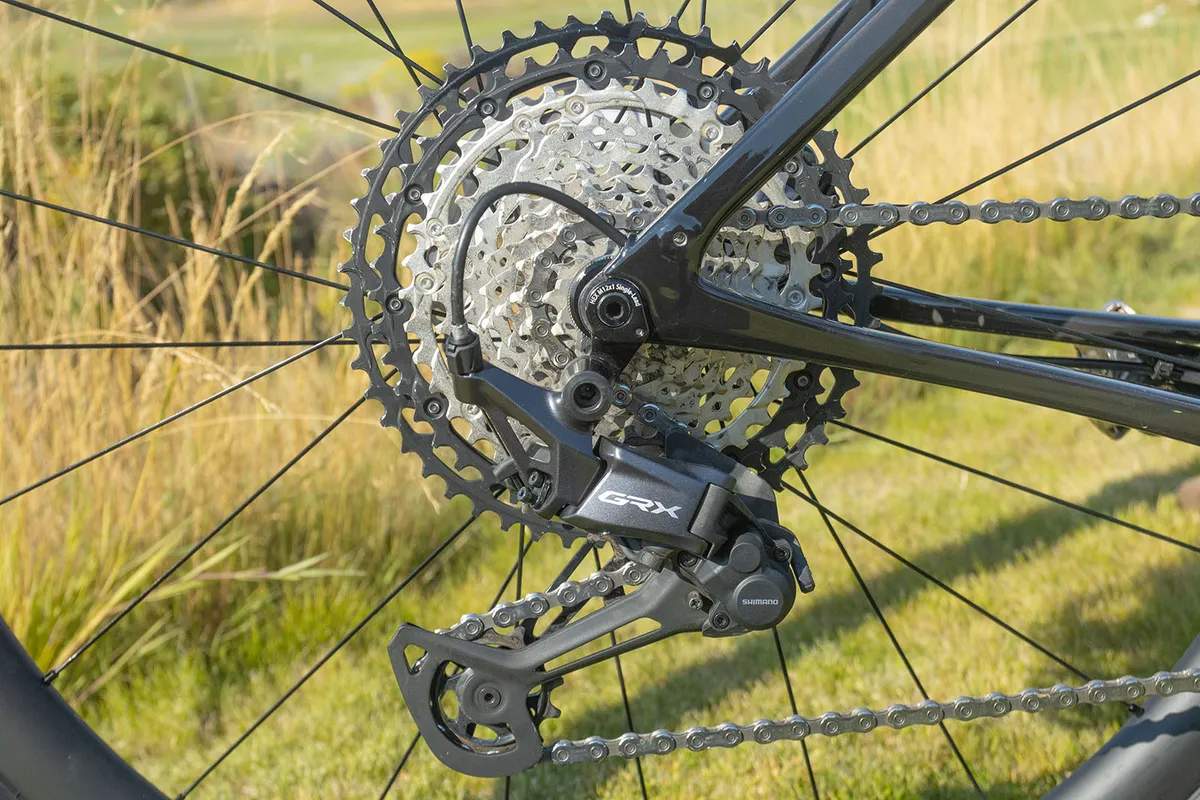
Launched today, Shimano is offering the new GRX RX820 groupset in three forms: Unstoppable, Undroppable, and Unbeatable.
Respectively, these names refer to whether the groupset is 1x with a wide-range, 10-51t cassette, 1x with a 10-45t cassette, or 2x with a tight 11-34 or 11-36t cassette.
The 1x cassettes, with their 10t smallest cogs, are designed for use on wheels with a Shimano Micro Spline cassette, whereas the 11-34 and 11-36t cassettes fit Shimano HG freehubs.
I tested the Unstoppable version set up on two gravel bikes – a Lauf Seigla and a Scott Addict Gravel.
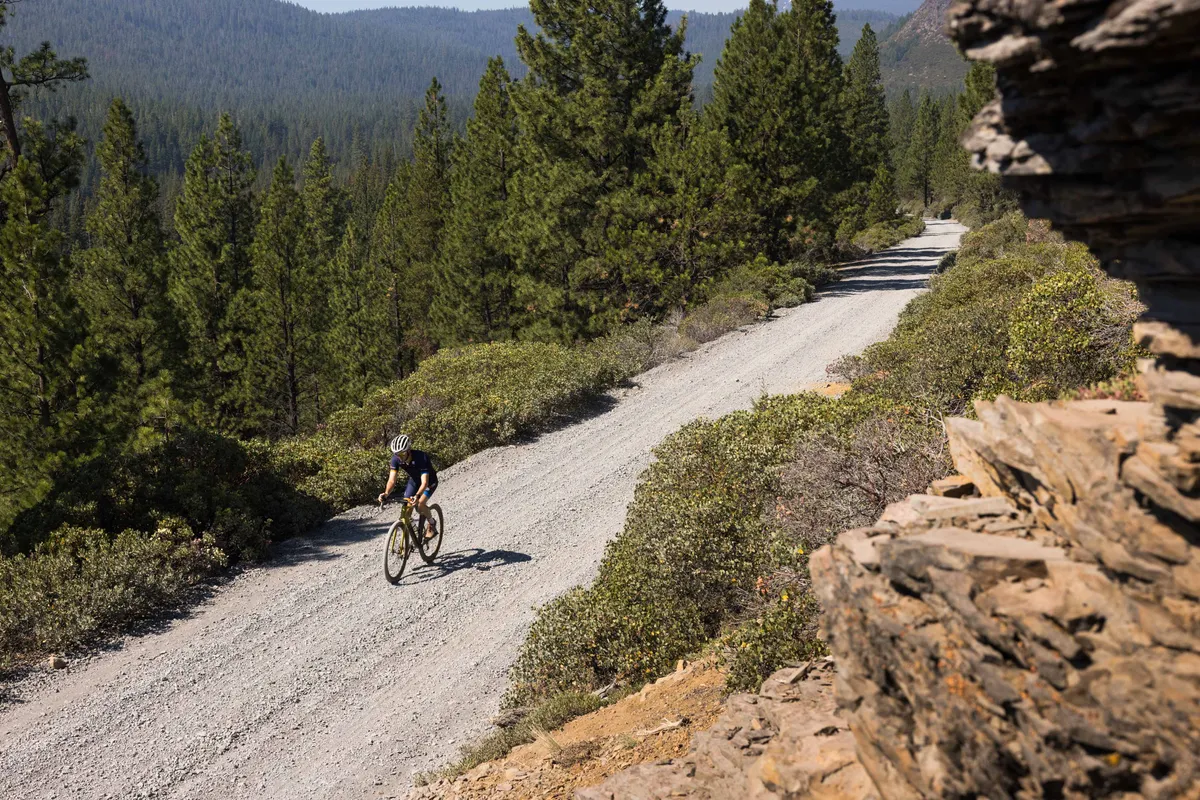
Shimano GRX RX820 Unstoppable setup
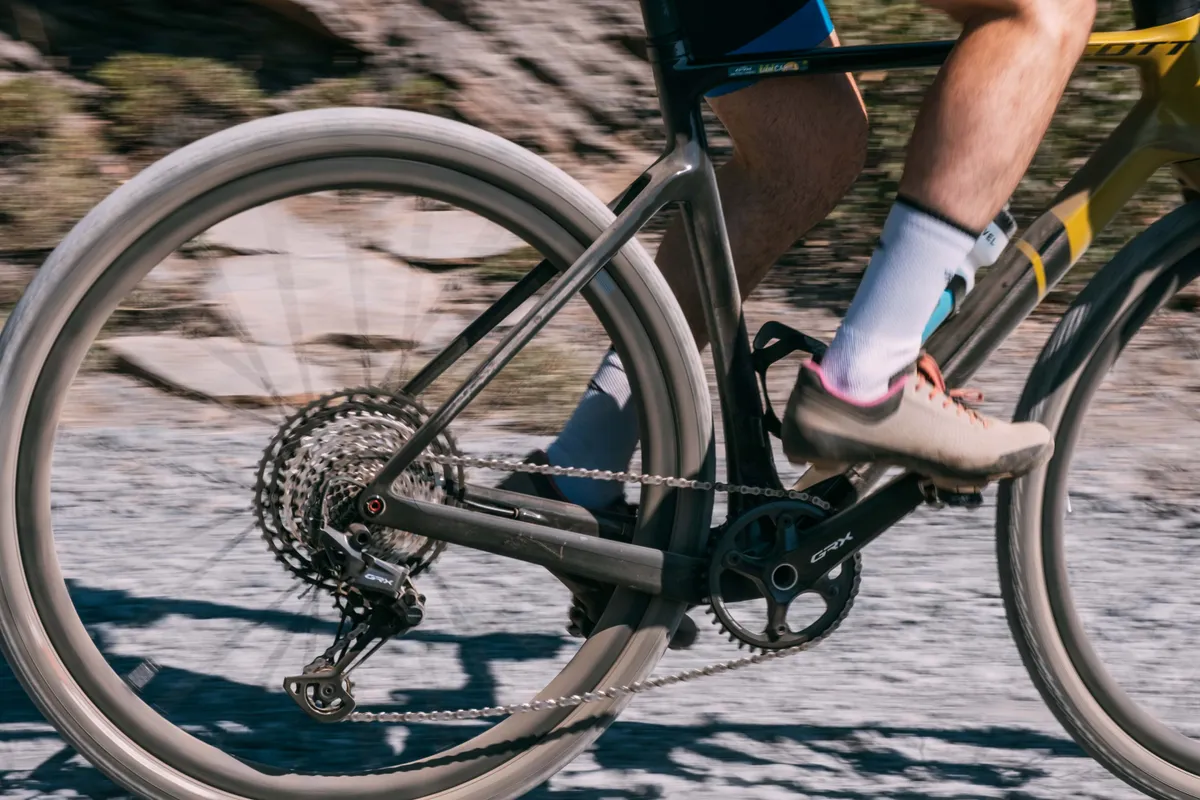
The vast majority of riders will get their GRX RX820 on a fully built bike, negating any installation worries.
However, for those who enjoy a groupset installation, the presence of familiar standards, mechanical shift cables and a largely unchanged hydraulic brake system will be a welcome sight.
That said, with many high-end gravel bikes now boasting fully integrated front ends (for the saving of some watts), and even electronic-only frame designs, the lack of a Di2 option at launch might be an issue.
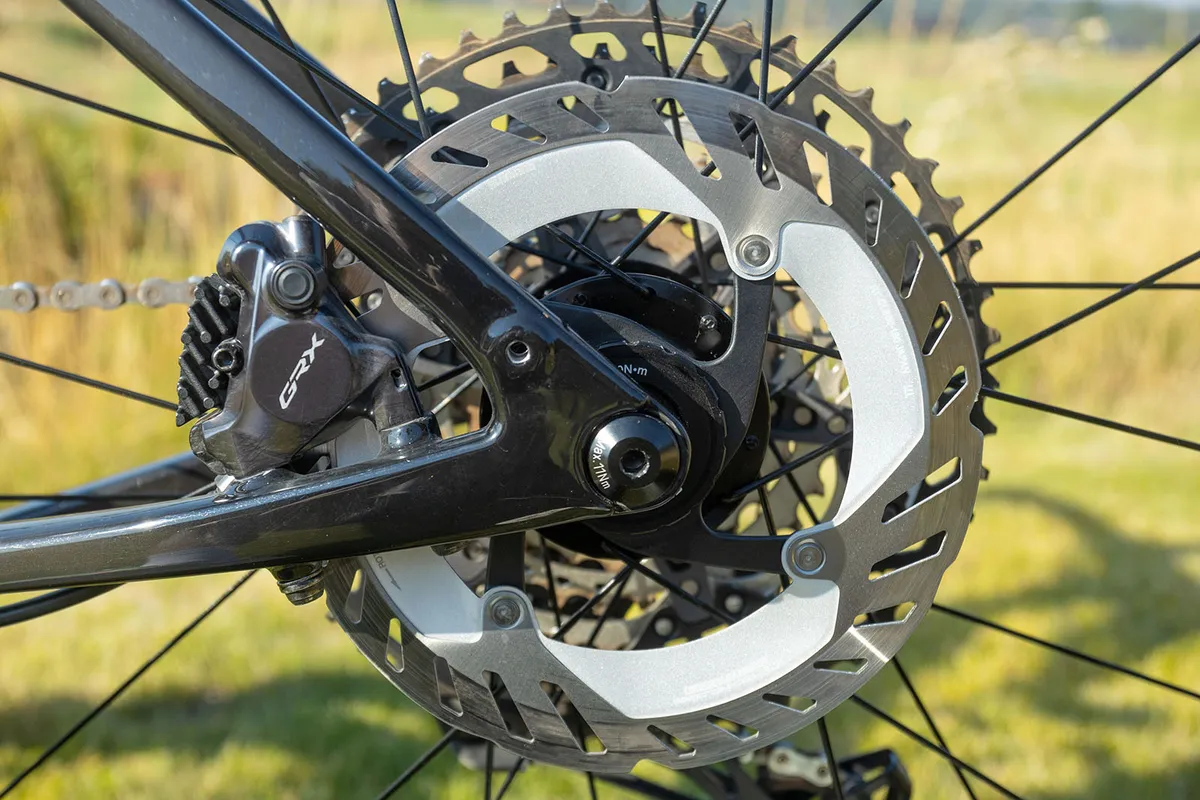
Shimano’s latest semi-wireless electronic road groupsets alleviate some of the pain associated with installation or component swapping, so only having a mechanical option available could pose problems for some prospective buyers.
With everything installed, however, indexing the gears and aligning the brakes is simple stuff for anyone with a little mechanical experience.
Shimano GRX RX820 Unstoppable drivetrain performance
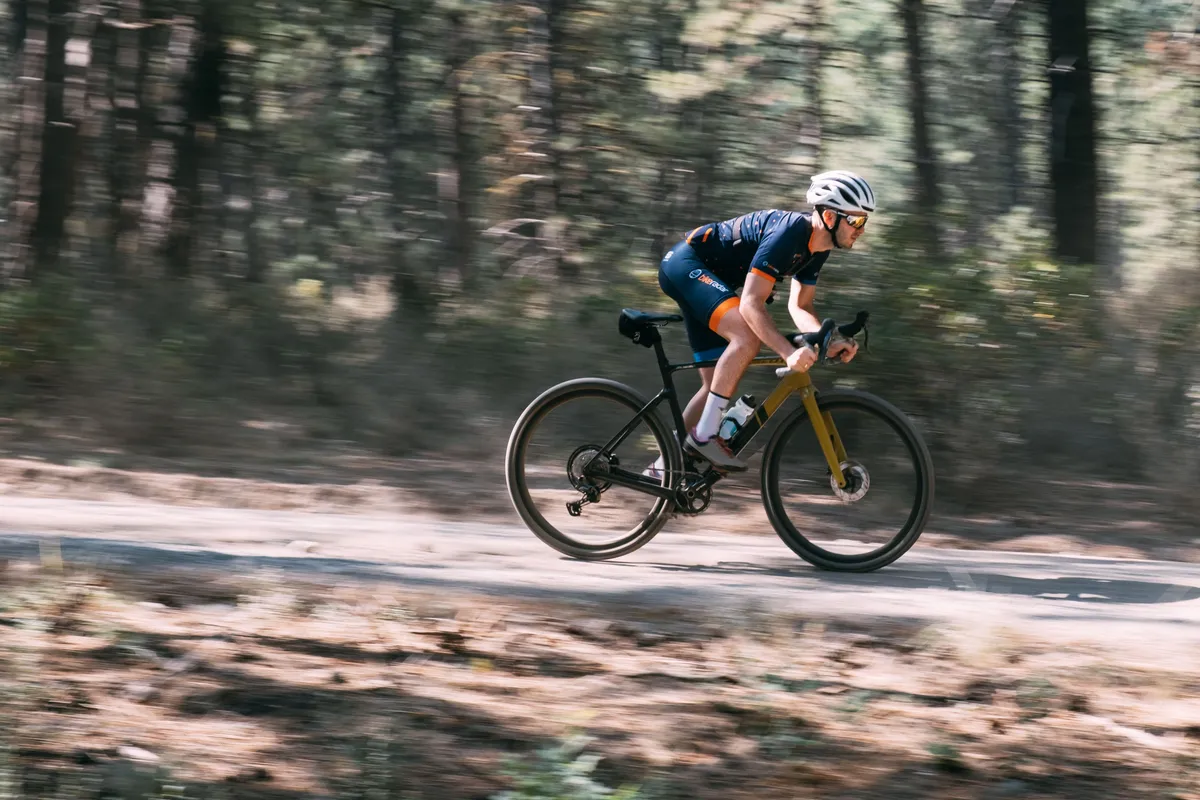
Put simply, the drivetrain performance from GRX RX820 Unstoppable is fabulous.
I’ve ridden similarly wide-range 1x groupsets from SRAM and Campagnolo, plus spent time on SRAM and Shimano’s 12-speed MTB groupsets. Shimano GRX RX820 Unstoppable is smooth and precise across the full range of the cassette.
Where I’d expect to find the derailleur to be sluggish in and out of the 10T cog, the chain shows no sign of delay. At the other end of the MT-8100 cassette, with a much larger tooth gap to overcome, the system shifts without worrying crunches or undue labour.
Overall, it’s a quiet system that shifts efficiently on rough and smooth terrain.
Shimano GRX ST-RX820 shifters
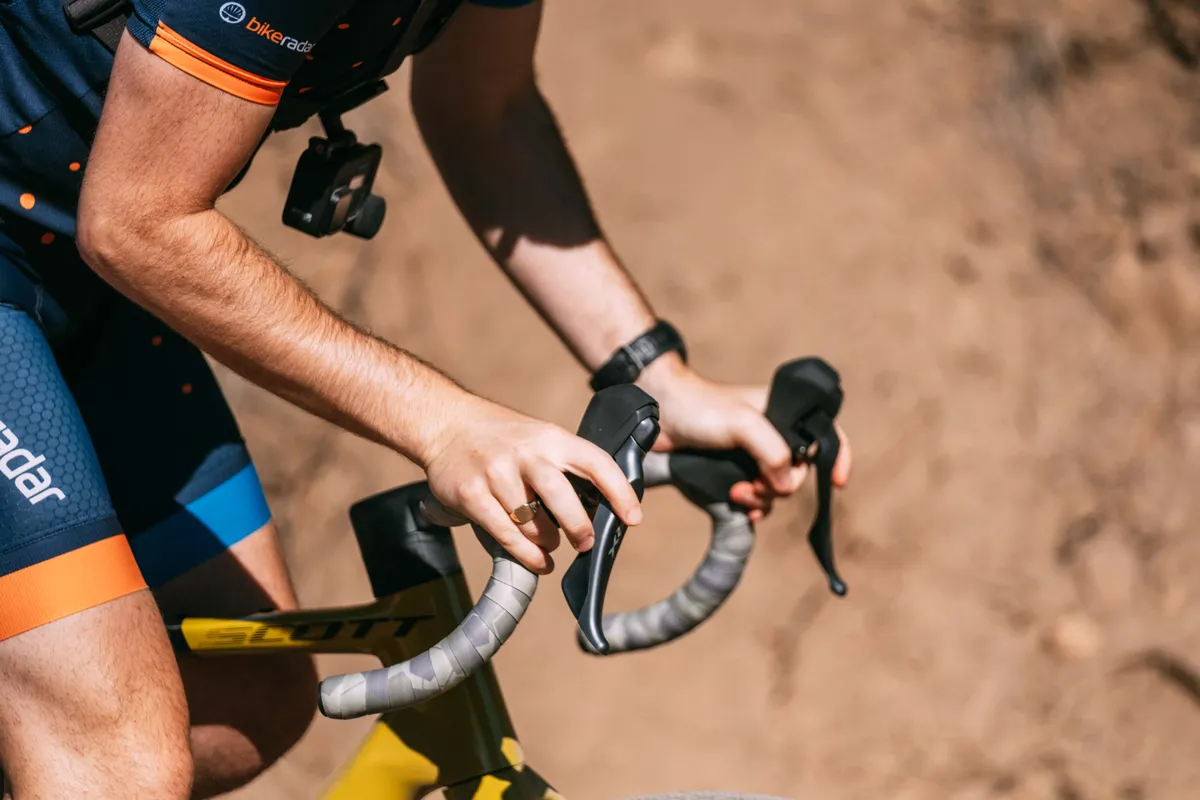
The latest shifters are where I found some of the most welcome and thoughtful changes, but it was also where I was left wanting more.
Starting with the positives, Shimano spent time considering confidence and control, amending the hood grip pattern before testing several height options for the ridges.
The design Shimano settled on has proved comfortable and grippy with both bare and gloved hands.
Shimano has also taken into account the prevalence of flared gravel bike handlebar designs, adjusting the band clamp angle so the top of the shifter body sits parallel to the ground.
The previous RX810 shifter, when mounted to a flared bar, would cant inwards, potentially causing riders to load their hand pressure through the outer edge of the shifter body.
This, Shimano said, was causing pressure points towards the outside of the palm for some riders and the new design is intended to address this.
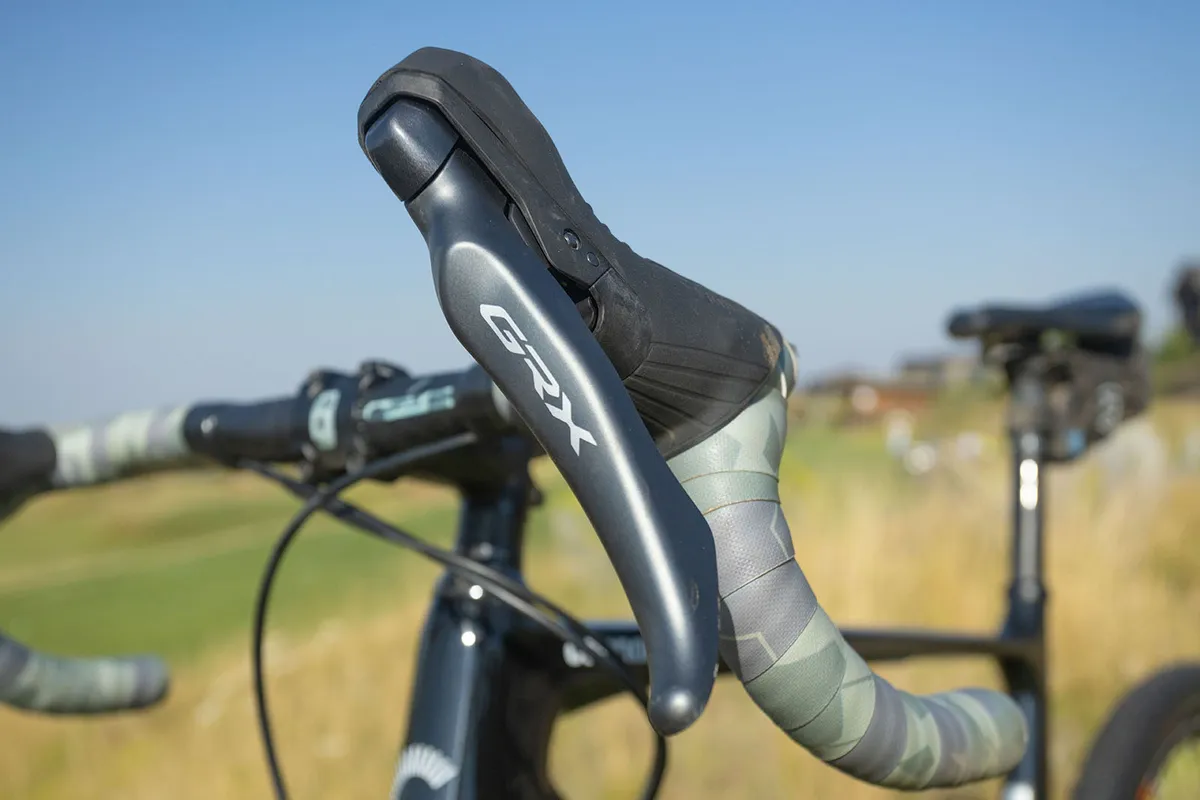
I rode the groupset over plenty of rough terrain during my testing, and my delicate roadie hands were perfectly comfortable.
In fact, the design is particularly useful to a rider like me who prefers to cant their levers inwards slightly.
Another change that has been made here is to the brake lever material. Shimano has employed some wet-weather grip tech from its fishing rods, adding what feels like a slightly coarse finish to the metal.
The result is a set of brake levers that feel very secure in the hands, even when riding technical terrain with wet hands.
Despite all of this, the shifters left me wanting more. SRAM made significant changes to its recently updated mechanical Apex shifters, bringing them closer in line (in terms of size and shape) with its AXS wireless electronic offerings.
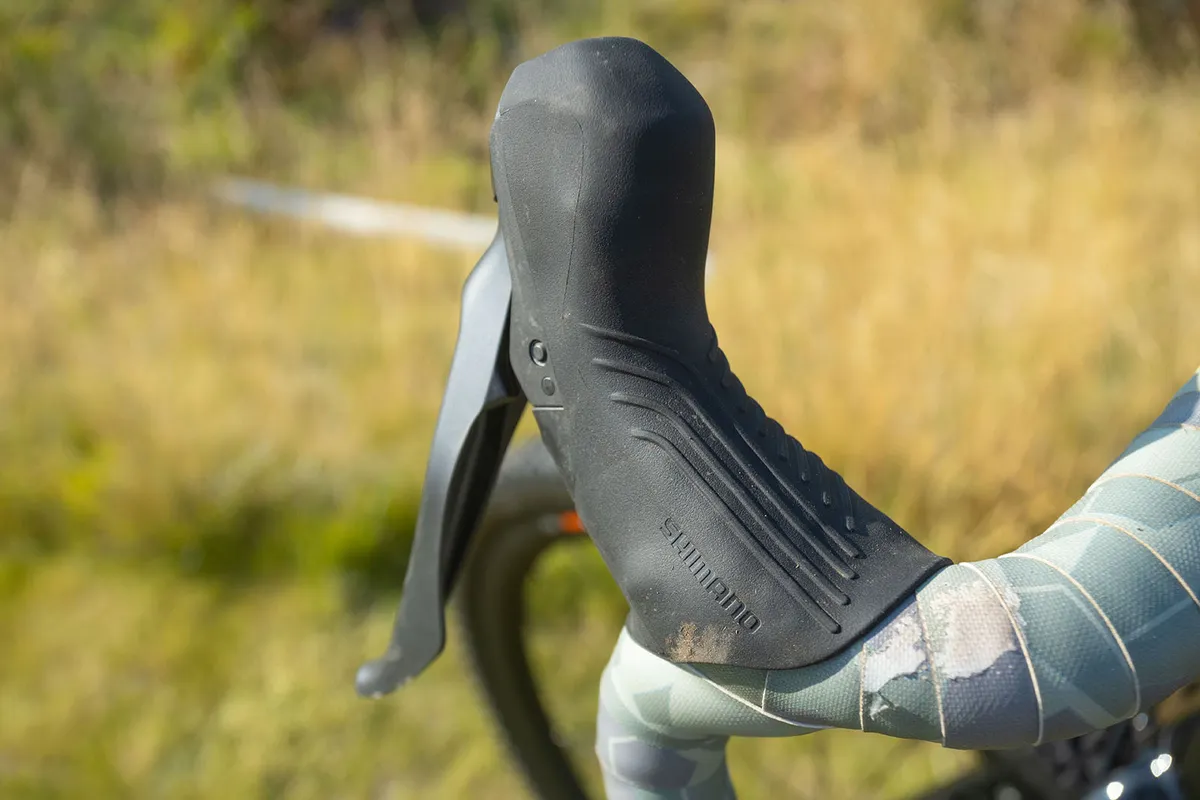
In my opinion, Shimano has missed an opportunity to do the same. The levers look, and feel, bulbous in my hands compared to the svelte, Ultegra Di2 R8170 shifters on my Specialized S-Works Aethos road bike.
Shimano argues it has squeezed in the capability to shift to an extra cog without making the shifter any bigger, but to do so is presumably largely a case of using a new internal ratchet (i.e. one with a different number of teeth).
After all, SRAM’s new mechanical Apex also moved from 11- to 12-speed.
Granted, SRAM’s DoubleTap shifting system is different from Shimano’s STI (Shimano Total Integration), but the point remains that the GRX RX820 shifters now stand out for their size.
While I wish the body was shorter, its length allows for plenty of finger grip underneath, which certainly aids confidence on fast, bumpy descents.
Shimano GRX RD-RX822-SGS rear derailleur
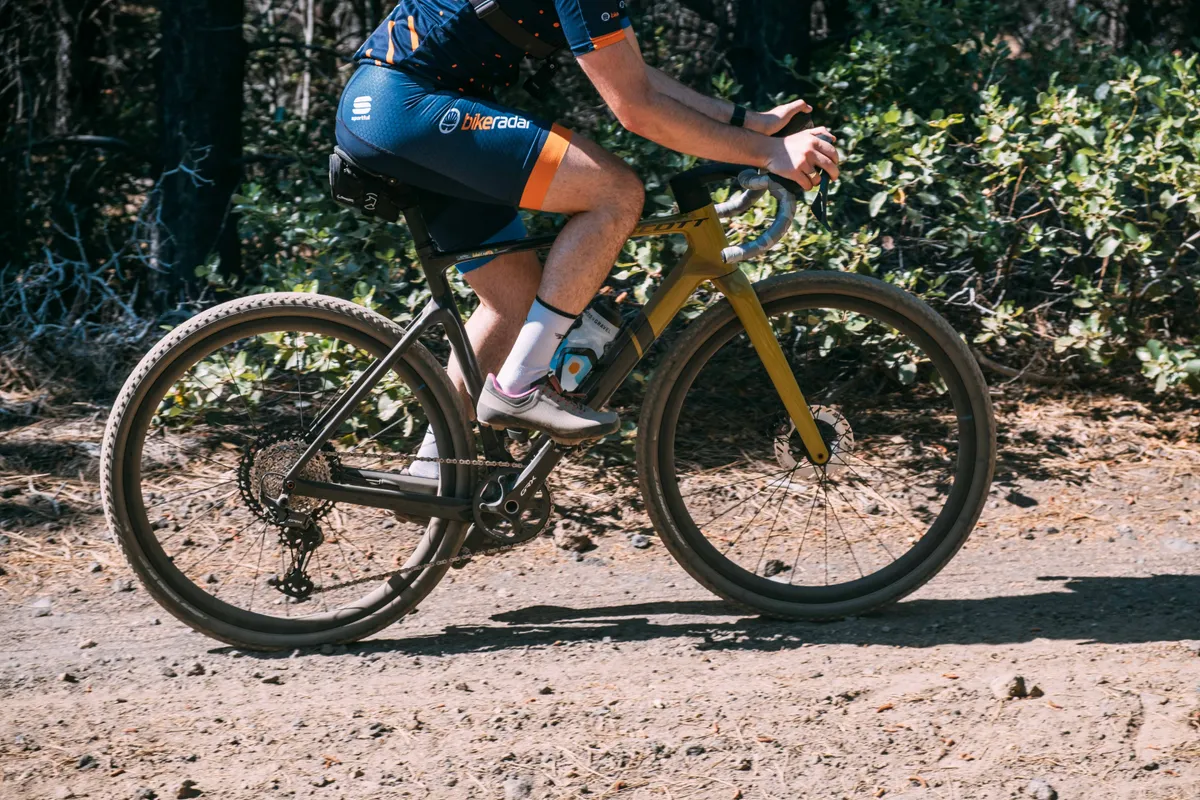
As already noted, my GRX RX820 Unstoppable groupset is a 1x affair, so there is no front derailleur to speak of.
Should you want a 2x setup, the GRX RX820 Undroppable groupset is available with 48/31T chainrings and an 11-34 or 36t cassette.
We will be looking to get our hands on the 2x groupset as soon as possible, but for now, we’ll focus on the RX822-SGS rear derailleur – the long-cage version.
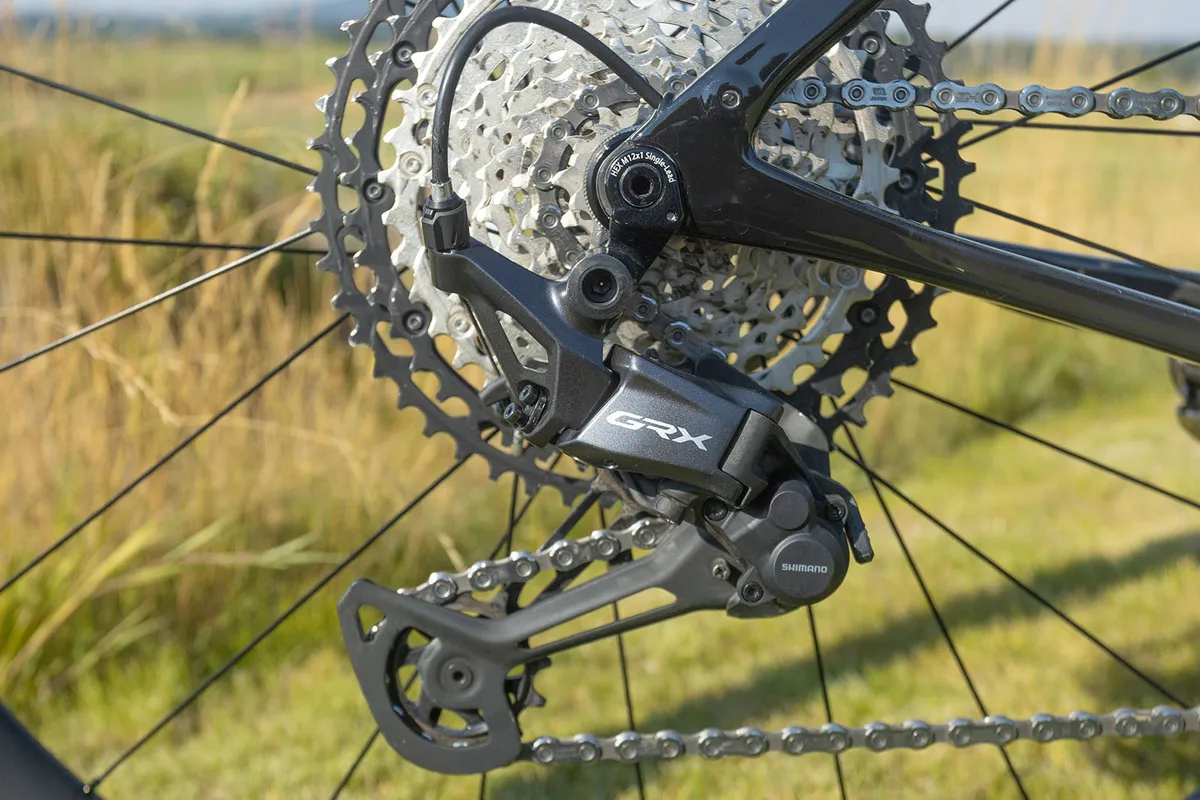
An RX822-GS rear derailleur – which has a medium-length cage – is also available, and is designed to complement the tighter, 10-45t cassette from the 1x GRX RX820 Undroppable groupset (yes, we realise this is all incredibly confusing).
The most significant development in the new GRX RX820 groupset, Shimano’s move to provide a rear derailleur that is capable of accommodating a 10-51t cassette, has been executed with great success.
Using the brand’s Shadow RD+ clutch technology, the rear derailleur performs particularly effectively over rough ground, shifting calmly between gears without delay or excessive noise.
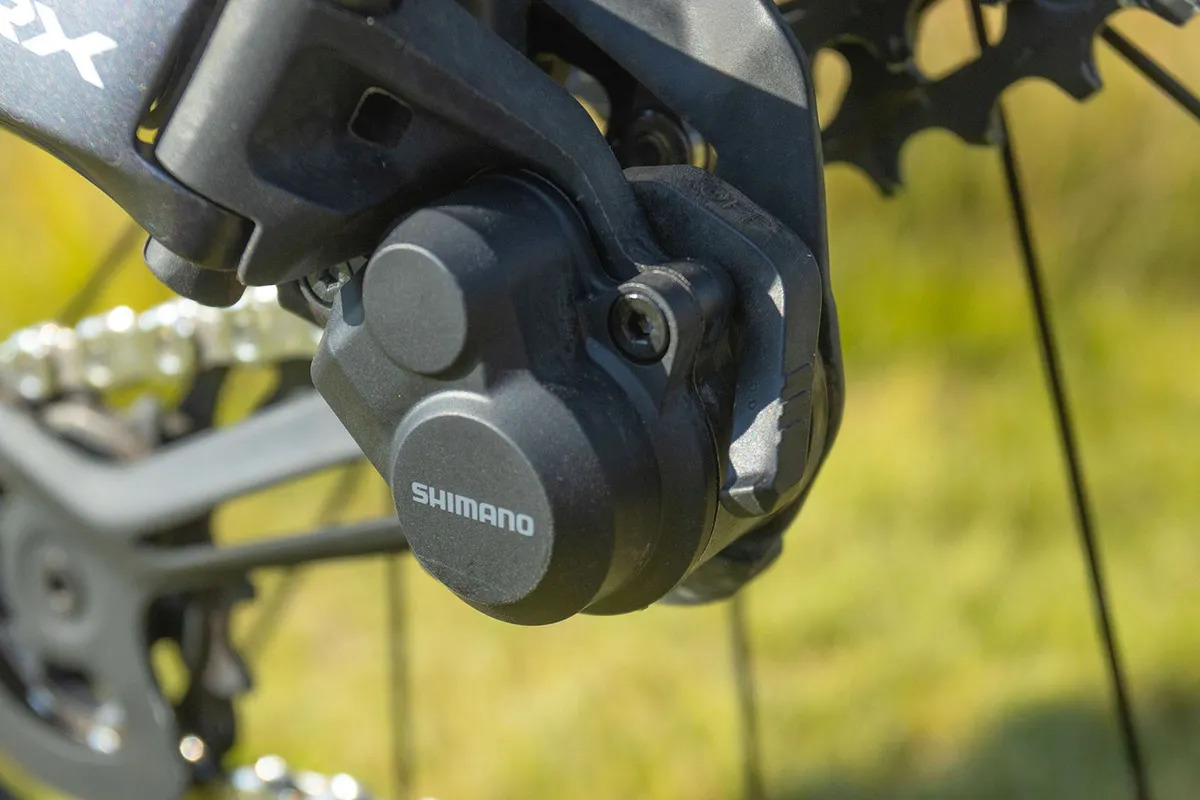
Shifting is excellent at both ends of the cassette and I was impressed to find this is also the case when changing under heavy load.
Despite the move to accommodate an MTB-style 10-51t cassette through the RX820-SGS rear derailleur, you’re not able to use one of Shimano’s flat-bar trigger shifters.
The pull ratios on the 12-speed MTB components are longer and, as Shimano’s David Lawrence told BikeRadar, the drop-bar shifter body would have had to widen to accommodate the longer pull ratio.
Whether this will pose a problem in the real world is debatable, however.
If you do want to flat-bar trigger shifters on your gravel bike, you could simply use one of Shimano’s 12-speed mountain bike rear derailleurs (SLX M7100, Deore M6100, Deore XT M8100 or XTR M9100) instead, because they’re fully compatible with the new GRX RX820 cassettes.
As we’ll come to shortly, the ‘new’ GRX cassettes are Shimano Deore XT mountain bike components anyway.
Shimano GRX FC-RX820-1 crankset and chainring
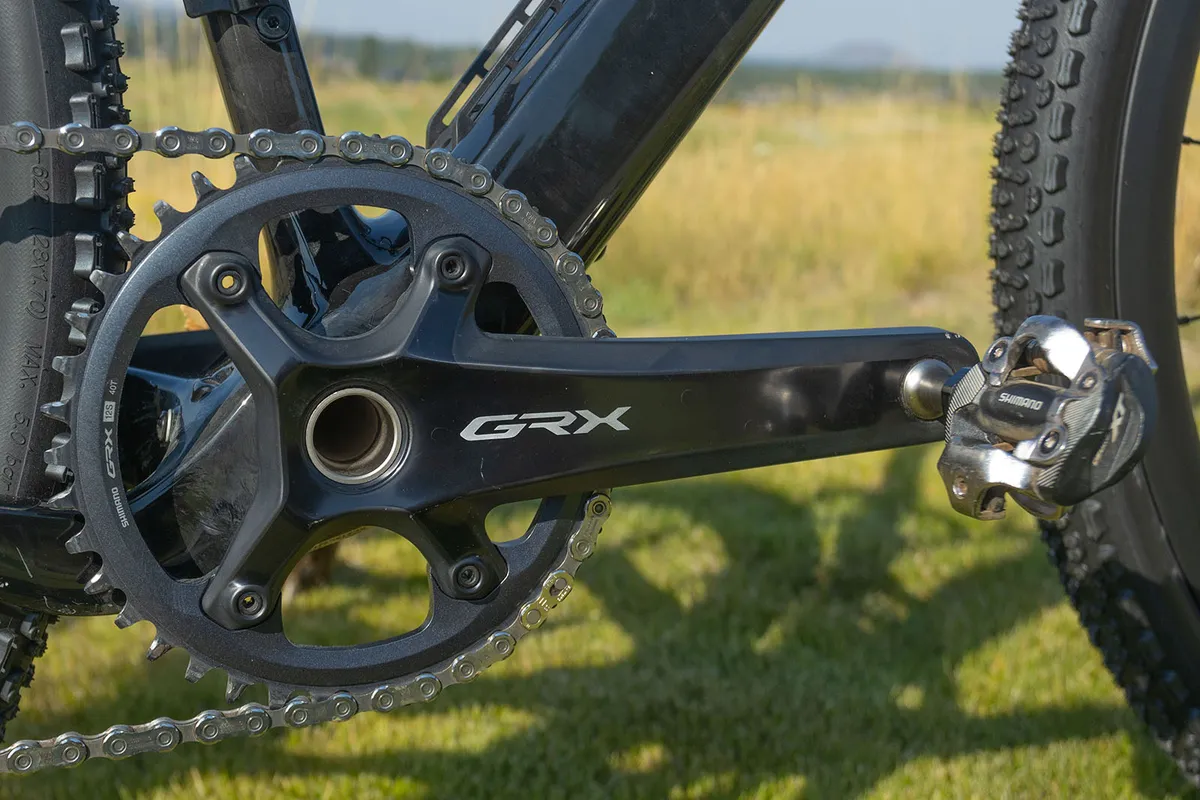
The 1x crankset and chainring are essentially carry-overs from the old groupset.
The FC-RX820-1 crankset uses the same 4-bolt 110mm Bolt Circle Diameter (BCD) as before, and the 49.7mm chainline remains unchanged.
The chainring tooth profile has been slimmed down a touch to deal with the slightly narrower 12-speed chain, but it's as you were up-front.
As before, there are two 1x-specific chainring options, 40 or 42t, and only three crank-length options: 170, 172.5 and 175mm.
While it’s fair to say optimal crank length is a highly personal thing, such a limited range may impact shorter riders in particular.
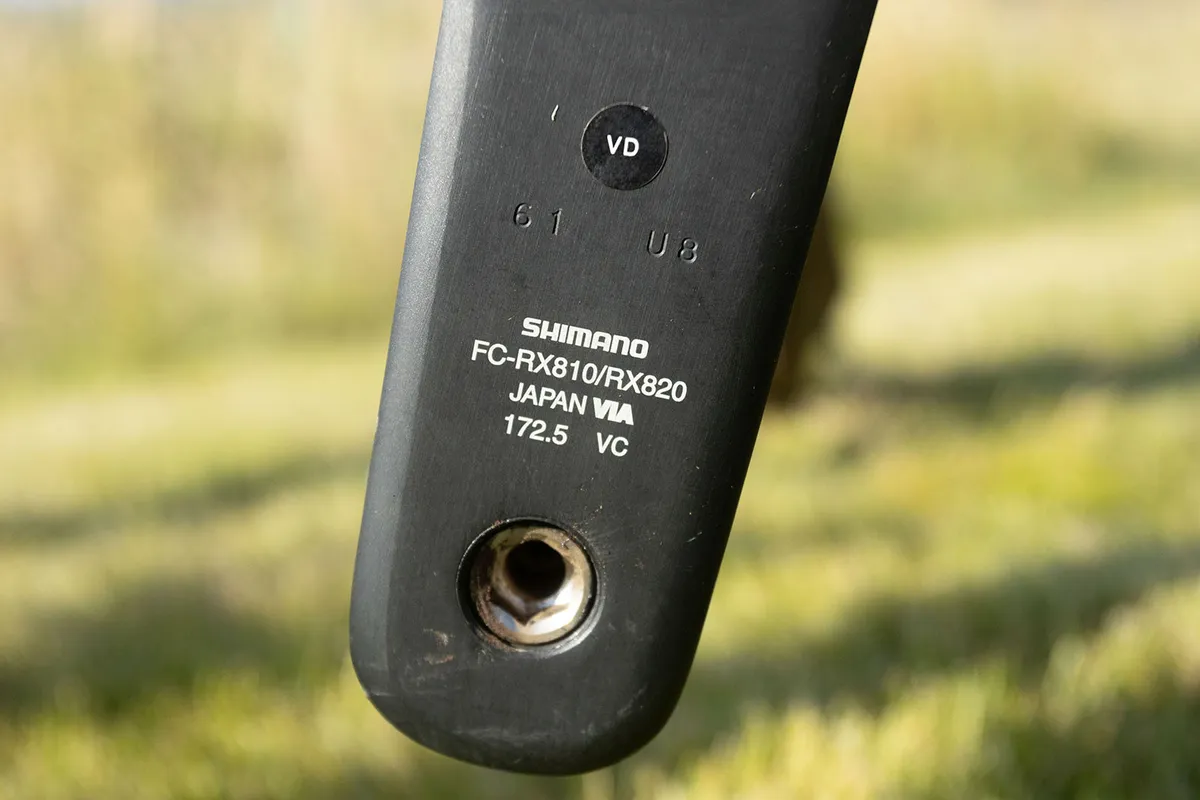
My test groupset was specced with a 40T chainring and 172.5mm length, which provided an ideal range for my riding when paired with the 10-51T cassette.
Whether this is down to the rear derailleur’s clutch, Shimano’s 1x-specific, narrow-wide chainring profile or just blind luck, I can’t be certain, but I didn’t drop a chain throughout testing.
However, while SRAM offers a power meter option at every level, none is found on GRX.
You can, of course, use one of the best power meters from another brand such as Stages, or 4iiii, but the fact one is missing here may disappoint watt lovers.
Shimano CS-M8100-12 cassette
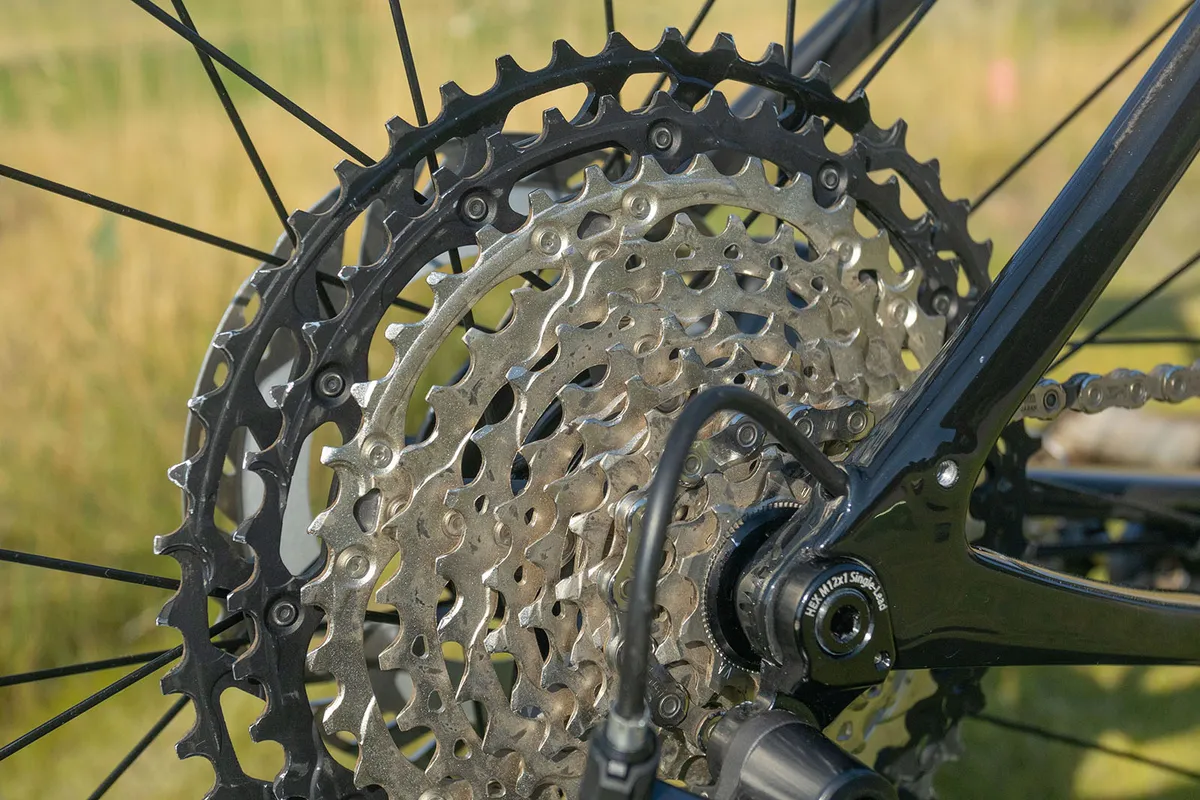
Shimano makes no effort to hide the fact it has pinched the cassette straight from the Deore XT M8100 mountain bike groupset.
While some might be disappointed at the apparent lack of innovation here, I’m rather pleased products are being shared.
The CS-M8100-12 cassette is, after all, already in production with good stock levels and it does the job perfectly.
Shifts are smooth across the plentiful 10-51T range and I’m yet to hear any squeaks from the cassette.
The only thing to note is that due to the 10T cog, the cassette requires a Shimano Micro Spline freehub body. This, depending on your current wheelset, may mean you require a new hub, or potentially a new wheelset, to match the new 1x groupsets.
As noted, though, the 12-speed cassettes that form part of the 2x RX820 Undroppable groupset are compatible with existing Shimano HG freehubs.
Shimano CN-M8100 chain
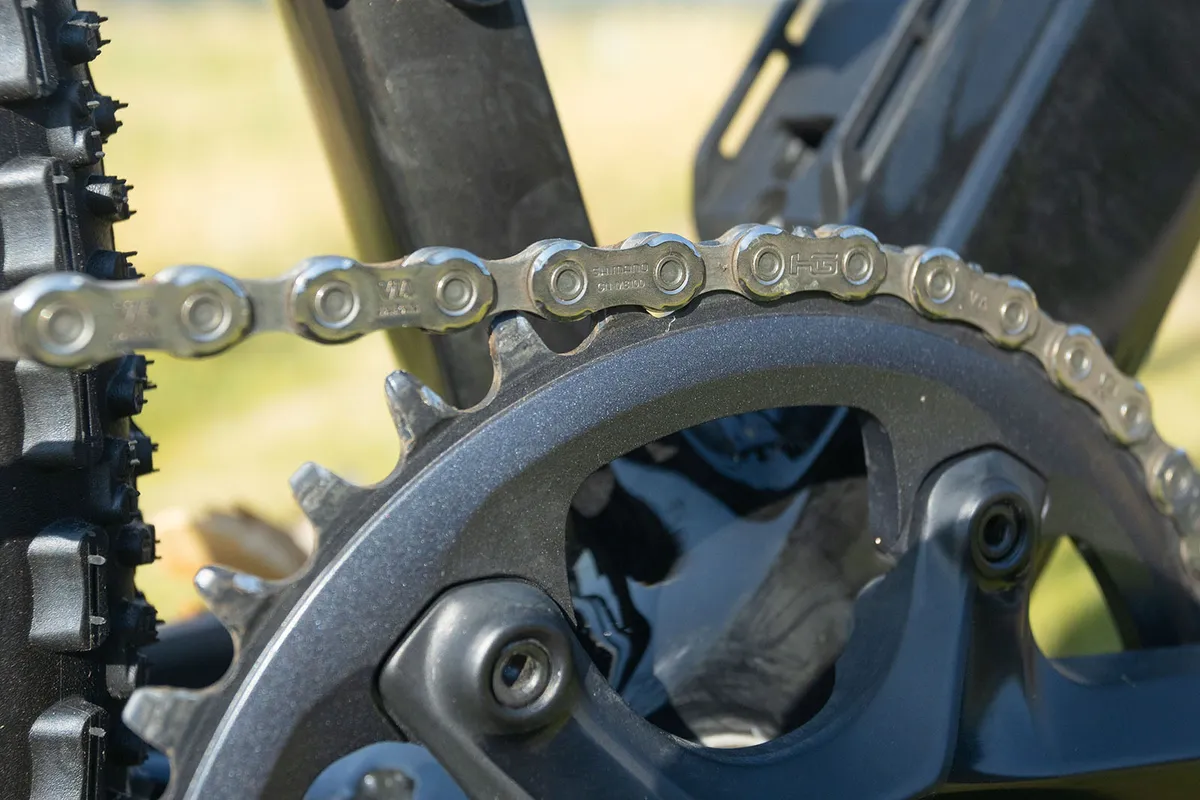
Like the cassette, the chain is taken from the MTB world without change.
The CN-M8100 chain has been in service on Shimano’s latest 12-speed Ultegra Di2 R8100 groupset too, proving to be a quiet design, with the nicely chamfered edges aiding smooth shifting.
Shimano GRX RX820 braking performance
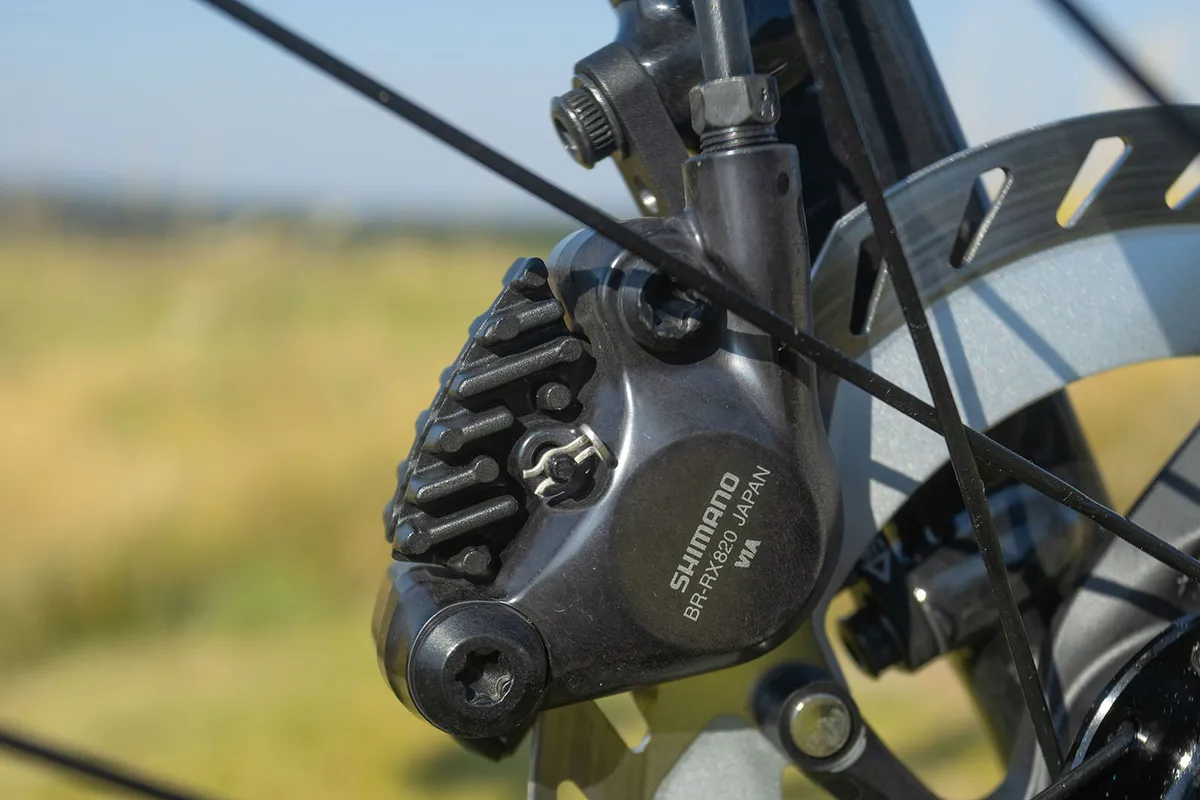
Shimano’s new GRX RX820 brake calipers have been brought into line with the rest of Shimano’s latest hydraulic caliper designs.
The bleed port has been moved to the external face of the caliper body for easier access and is now opened via an Allen key rather than a spanner.
An Allen head bolt also replaces the flat-blade screwdriver bolt for the retention pin to reduce stripped heads. However, users and mechanics should still be careful to apply a dab of anti-oxidation compound to the threads prior to installation to prevent it seizing.
You’ll also find the Servo Wave technology and additional 10 per cent of pad clearance Shimano introduced with its Dura-Ace Di2 R9200 and Ultegra Di2 R8100 road groupsets.
I’m a massive fan of all of these changes, having completed several bleeds on my Ultegra brakes at home. The additional pad clearance has also been a very welcome feature, with less annoying noise after heavy braking.
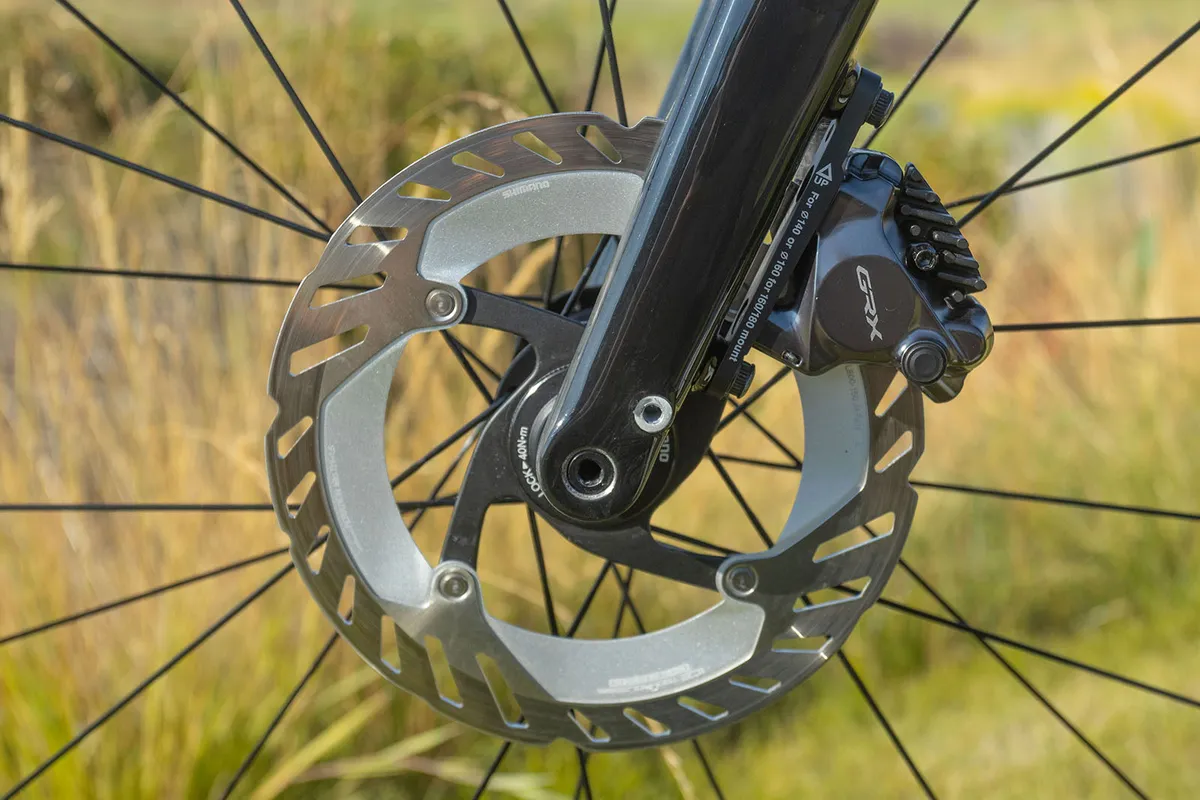
The system also uses the latest CL rotor series. GRX RX820 gets the RT-CL800 rotors and they are a clear improvement over the XTR RT-MT900 rotors on my road bike.
Shimano quietly released the CL rotors when it launched its 105 Di2 R7100 groupset, adding a slightly heavier aluminium carrier that was said to reduce heat deformation.
This is my first experience of the RT-CL800 rotors and I’m very impressed.
In practice, the brakes provided the power and modulation I’ve come to expect, but did so with the quietest operation I’ve experienced from Shimano rotors.
It’s a real highlight of the new groupset and I’ll be looking to swap my RT-MT900 rotors for a set of the RT-CL800s as soon as possible.
What about Di2?
While Shimano has evidently been a busy brand, I’m disappointed to see no new Di2 groupset accompanying this launch.
When I asked Shimano about this, it told me that 75 per cent of gravel bike groupset sales are mechanical, therefore it wanted to serve the largest part of the market first.
Shimano was also tight-lipped regarding whether we’ll see a Di2 version. At the time of launch, RX820 is a mechanical-only groupset.
Shimano GRX RX820 Unstoppable weights and prices
Because we had a complete Shimano GRX RX820 Unstoppable groupset, we were able to weigh it prior to installation for testing.
| Component | Weight (g) | Price (£) | Price ($) |
|---|---|---|---|
| Shimano GRX RD-RX822-SGS rear derailleur | 295 | 119.99 | 126.99 |
| Shimano CS-M8100-12 10-51t cassette | 473 | 159.99 | 164.99 |
| Shimano GRX FC-RX820-1 crankset | 646 | 229.99 | 249.99 |
| Shimano GRX ST-RX820 and BL-RX820 levers and calipers set | 943 | 679.98 | 829.98 |
| Shimano RT-CL800 160mm rotors (pair) | 218 | 109.98 | 121.98 |
| CS-M8100 chain | 247 | 49.99 | 48.99 |
| Total | 2,822 | 1,349.92 | 1,542.92 |
Shimano GRX RX820 aesthetics
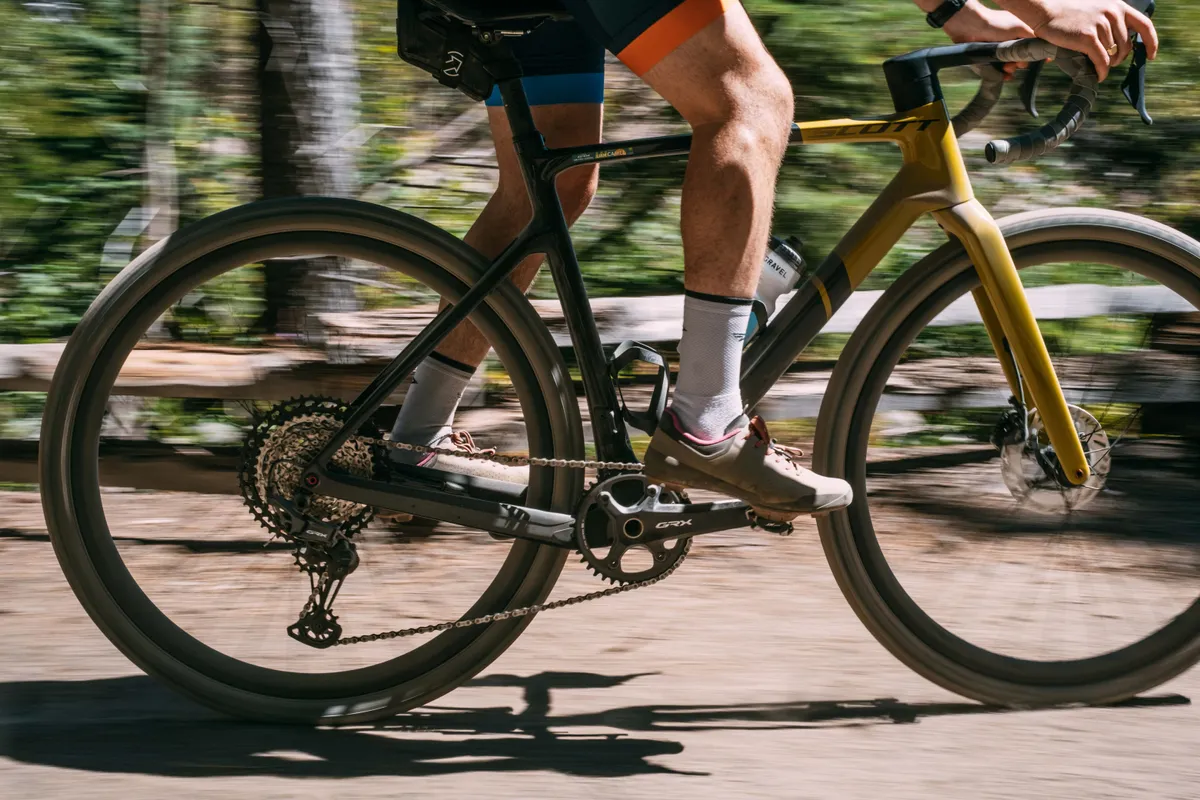
Putting what are effectively MTB components onto a drop-bar bike looks a little wrong to my roadie eyes, but I fully appreciate that mullet drivetrains (drop-bar shifters paired with a mountain bike rear derailleur and cassette) are all about function over form.
I think Shimano has done a good job with the design. Everything looks as though it fits together, which is one of my big bugbears with other mullet setups. SRAM’s AXS Mullet groupsets, for example, use Eagle MTB components alongside gravel pieces, and looks disjointed to me as a result.
That said, I do prefer the sparkle of SRAM’s designs. The muted black theme of GRX doesn’t exactly give me ‘free-spirited gravel gnar shreddy’ vibes.
The simple, silver sprockets on the cassette are appreciated, however. I can show off my fastidious attitude to drivetrain cleaning.
How does Shimano GRX RX820 compare to the competition?
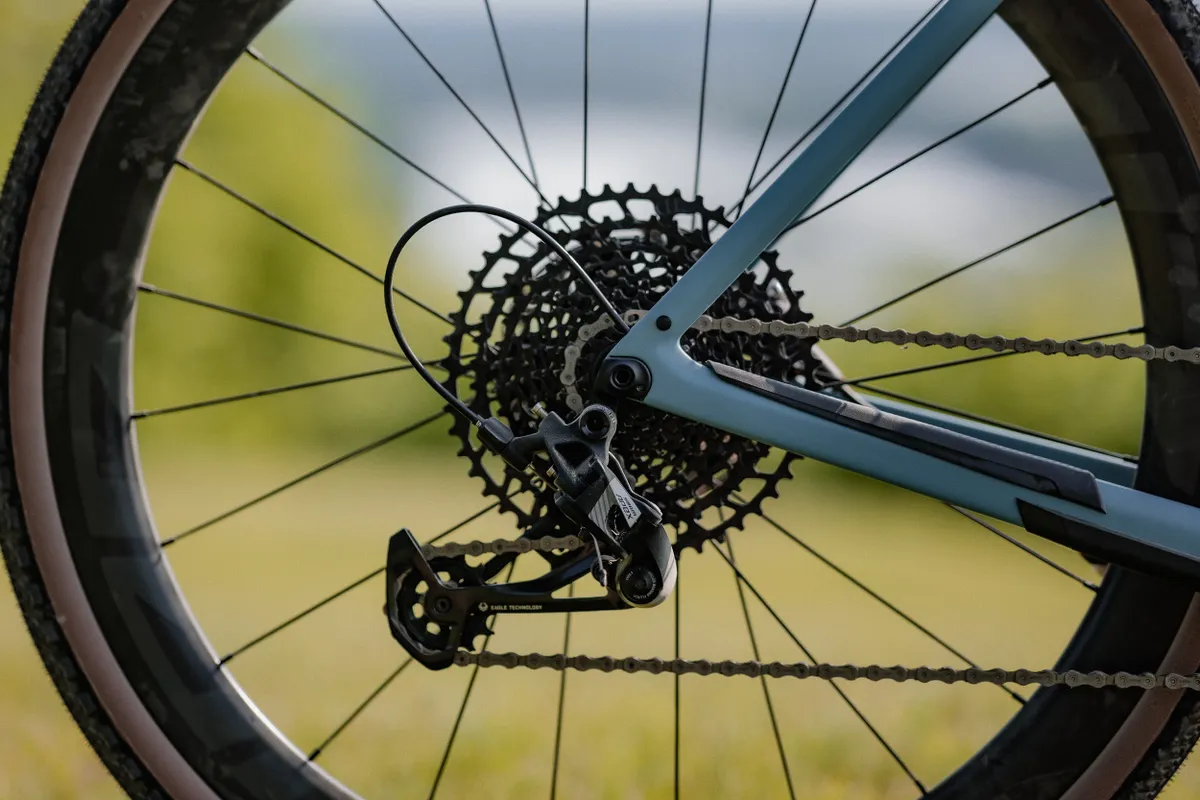
At an RRP of £1,349.92/$1,542.92 (without a bottom bracket), GRX RX820 Unstoppable seems like good value for money to me, despite the hike in price from $1,179.75 for GRX RX810.
There is no direct comparison to SRAM at the RX820 level. Force would be the equivalent groupset, but there is no 12-speed mechanical option available.
As things stand, the closest competitors in terms of price and functionality are SRAM Apex Eagle ($1,020) and SRAM Apex AXS XPLR ($1,409 including a SRAM power meter upgrade).
GRX RX820 is lighter at 2,822g to the 3,148g of Apex Eagle, so if you’re looking to create a lightweight gravel bike, GRX would be the way to go.
Putting together a SRAM Force AXS Eagle 1x groupset would set you back $2,241, so the acid test would come if Shimano released a Di2 version of GRX RX820.
Campagnolo has its 1x13-speed Ekar gravel groupset at $1,764, making RX820 seem like very good value to me.
Shimano GRX RX820 bottom line
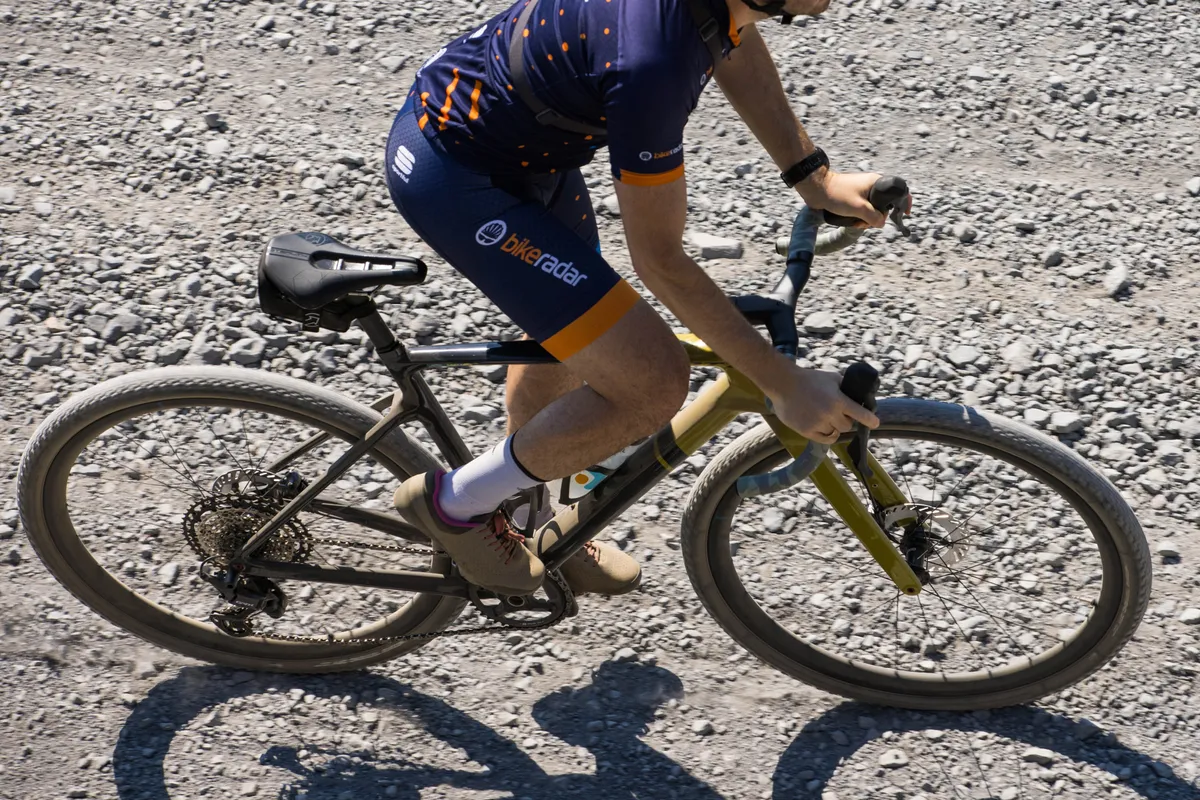
While I would have liked to see a slightly smaller lever body, Shimano GRX RX820 Unstoppable is a fantastic gravel groupset that does all of the important things near-perfectly.
The shifting is spot on and the braking really impresses with its power and lack of noise.
In fact, the lack of noise following heavy braking is a very welcome feature that will improve a rider’s day-to-day use of the groupset.
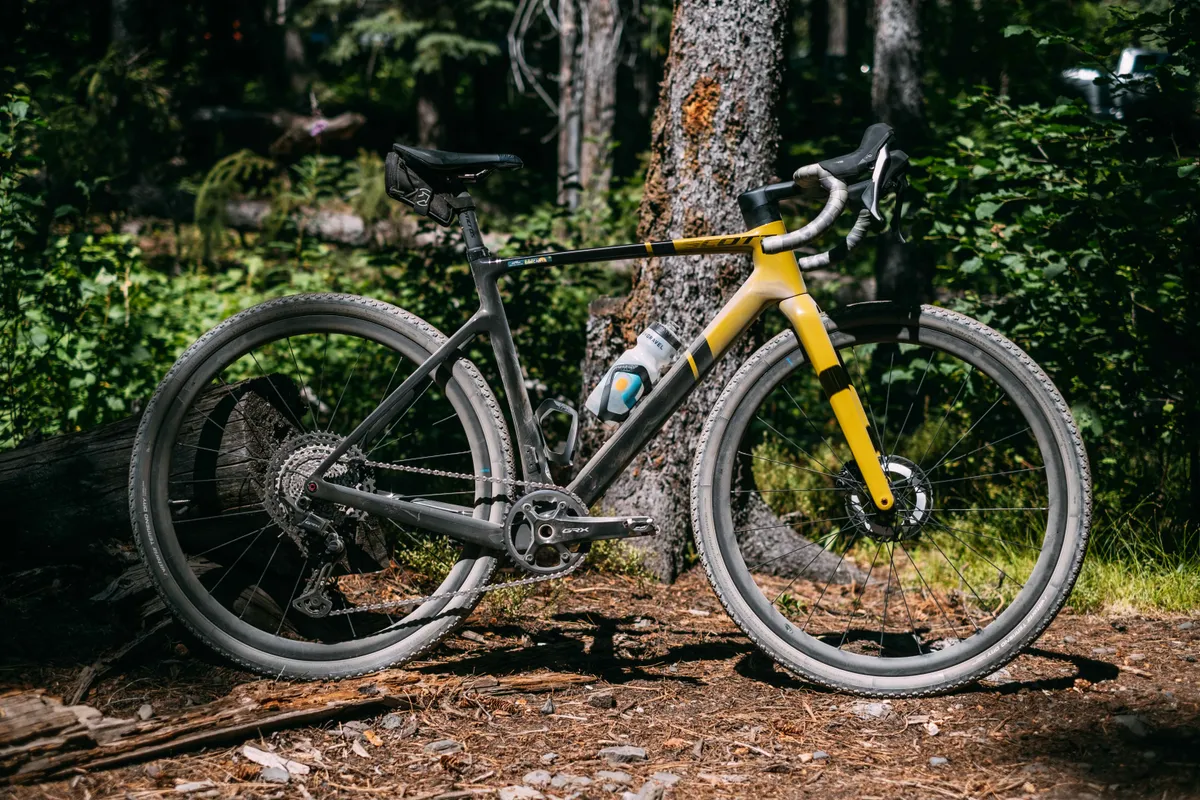
But the main highlight, for me, is Shimano’s offering of the 1x 10-51t gearing, alongside a closer-range 1x option and a 2x groupset.
When you get past the slightly cringey names, it’s clear the majority of gravel riders will likely be served well by the new GRX.
While using components from Shimano’s existing MTB range might seem lazy, it allows for a faster rollout of the groupset. Parts will be more readily available, and in the best news for buyers, discounts are already available on some key components.
Product
| Brand | Shimano |
| Price | £1350.00, $1543.00 |
| Weight | 2822g |
Features
| Crank options | 1x |
| Speed | 12 |
| Brake type | hydraulic_disc |
| Cassette options | 10-51t |
